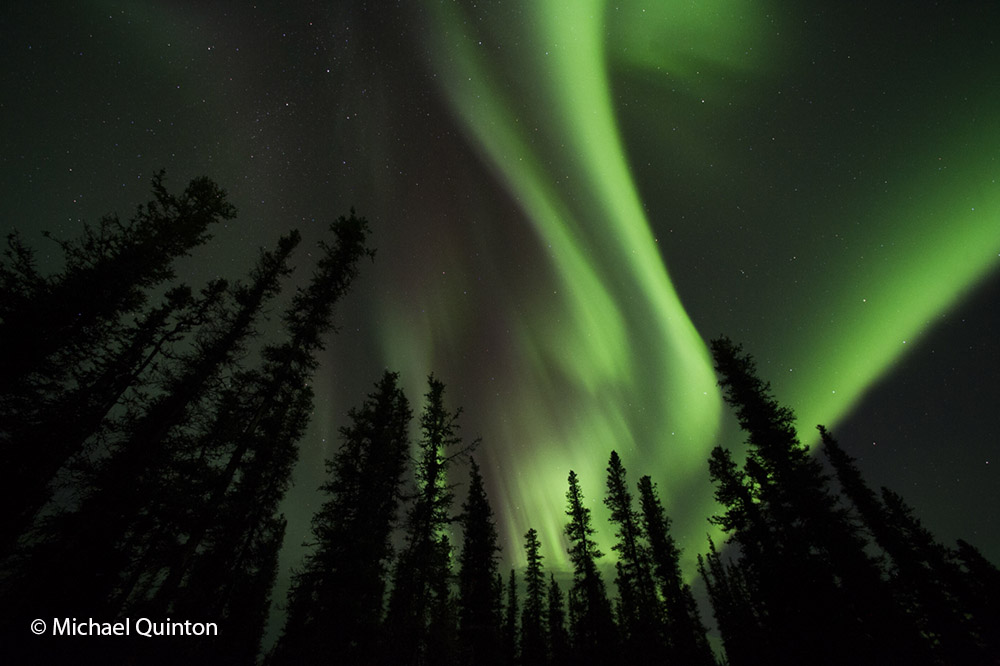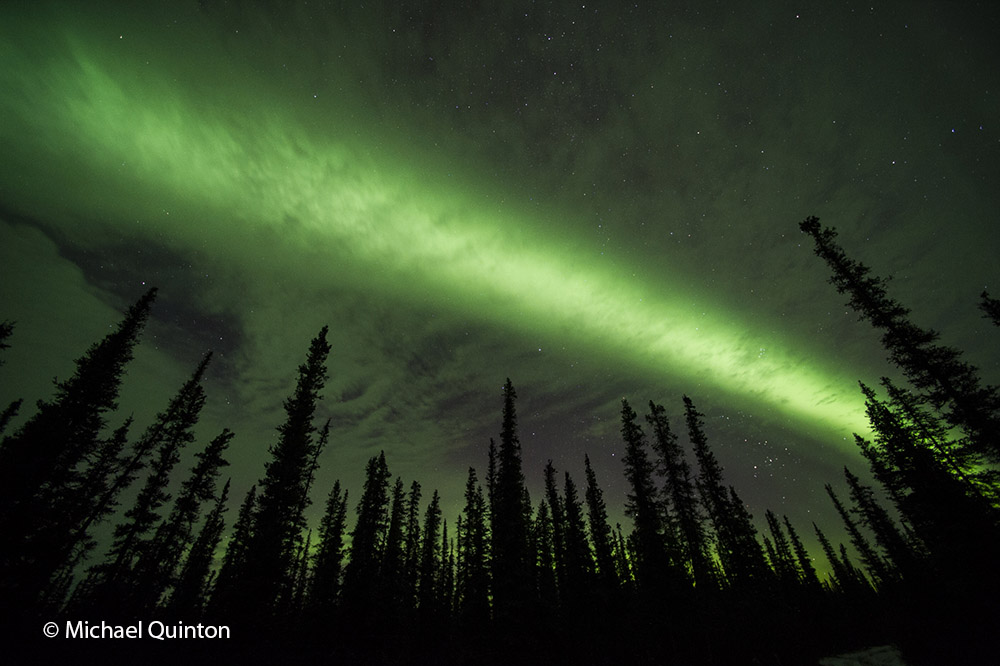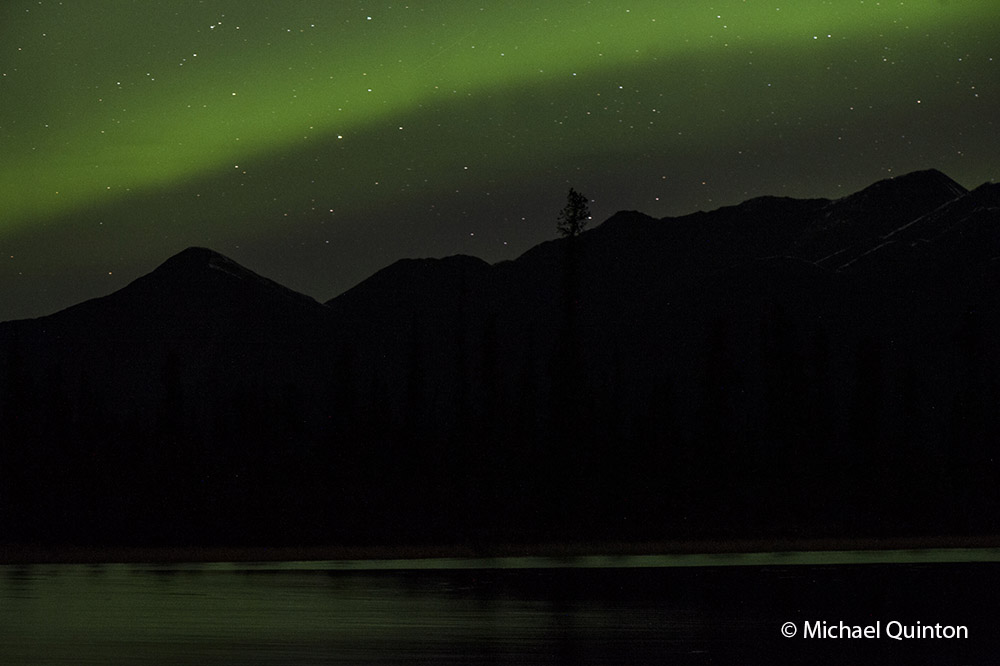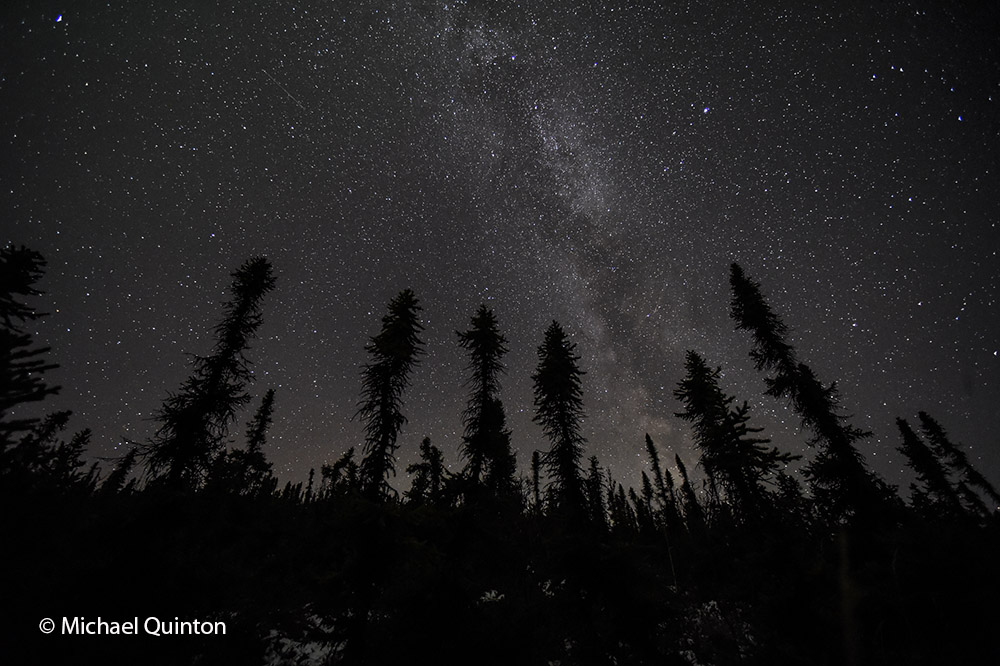 Aurora borealis in my back yard. Slana, Alaska
Aurora borealis in my back yard. Slana, Alaska
The aurora borealis displays are really picking up this year. After a few years of slow aurora activity its an exciting change and a great excuse for stay up late and snapping a few photographs. With todays wonderful digital cameras getting great aurora photos is easier than ever. I remember the day when I had only Kodachrome film with an ASA speed of either 25 or 64. Living in Alaska it could take more than two weeks just to get your processed film returned and check your results. Today you can snap a shot or two check the exposure using your histogram display, adjust your exposure if necessary and shoot away . You can be confident of what you’re getting.
It’s important to use your histogram to check your exposures. If you simply look at the display and they seem fine you may be in for a surprise when you see the images on the computer screen. In the dark our eyes adjust and your camera display may seem much brighter than it really is. Aurora dancing on the clouds. Slana, Alaska
Aurora dancing on the clouds. Slana, Alaska
Knowing your camera’s performance is important. Some older digital cameras, even very expensive ones, have sensors that would quickly get grainy as you cranked up the ISO above 600. Increasing the ISO increases your sensors light sensitivity. In other words an ISO setting of 4500 will allow take your photographs with a shorter time exposure than say an ISO setting of 200. Either high or low ISO can result in great photographs. But they will be different. One difference will be the stars. A high Iso reading allows faster shutter speeds which will allow your stars to be points. An exposure of longer than twenty seconds will result in your stars becoming star-trails. The longer the exposure, the longer the star-trails.
 Aurora displays over the Mentasta Mountains.
Aurora displays over the Mentasta Mountains.
A couple of nights ago I hiked down to a small lake to take aurora photos. I had already scouted the lake for this purpose and waited for a clear evening to set up. Ice was forming on the lake and it would soon freeze over but there was enough open water for possible reflections. At the lake I encounter a problem. I could not get to the water’s edge because there was about thirty feet of shallow muddy lake bottom with emergent vegetation. But the photos were not a complete failure.
 A couple other problems I encountered. I know my camera fairly well, how to change the iso setting without looking for instance. But this technique can lead to trouble. As I adjusted the ISO setting without looking I inadvertently changed the quality setting. I always shoot in RAW format. Raw allows more latitude when processing the photographs. As I stumbled blindly with my camera settings I changed my quality setting from Raw to Tiff. Luckily the Tiff setting was high-resolution. It would have been much more serious had I set the quality setting to a low-resolution jpeg file. I seem to re-learn this lessonon an annual basis. Always use a flashlight to make these kind of adjustments. Another precaution for aurora shooting I make is to taping my lenses at infinity setting on the focus ring so it cannot rotate out of focus. And, be sure to turn off the autofocus.
A couple other problems I encountered. I know my camera fairly well, how to change the iso setting without looking for instance. But this technique can lead to trouble. As I adjusted the ISO setting without looking I inadvertently changed the quality setting. I always shoot in RAW format. Raw allows more latitude when processing the photographs. As I stumbled blindly with my camera settings I changed my quality setting from Raw to Tiff. Luckily the Tiff setting was high-resolution. It would have been much more serious had I set the quality setting to a low-resolution jpeg file. I seem to re-learn this lessonon an annual basis. Always use a flashlight to make these kind of adjustments. Another precaution for aurora shooting I make is to taping my lenses at infinity setting on the focus ring so it cannot rotate out of focus. And, be sure to turn off the autofocus.
 When the auroras faded, I turned my camera to the south to capture the Milky Way and black spruce.
When the auroras faded, I turned my camera to the south to capture the Milky Way and black spruce.
When I left to hike back to my vehicle, I could not find the trail I came down on and had to bush-wack through a tangle of willow, alder, alpine birch, sphagnum covered hummocks and stunted black spruce packing two tripods. At least I was making enough noise that the possibility of suddenly encountering a snoozing grizzly was about as remote as the heavens I had been photographing. It’s all part of the fun of photographing the Alaskan wilderness.
